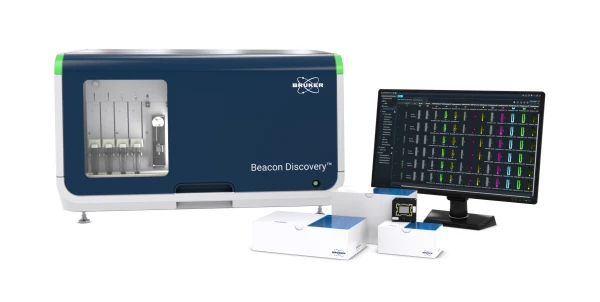New Cannabinoid Purification and Testing Solutions
Purifying and testing cannabinoids and other compounds can present challenges
Complicating factors include:
- The background of the plant and the potency and yield of the extract
- The chemical complexity of the extract and the presence of interfering substances
- The desired purity of the product
Cannabinoid Testing
As the cannabis potency testing field has evolved, so have the number of protocols and products to enable cannabinoid detection and quantification.
A focus has become increasing testing performance by streamlining method workflows. This has included the advent of HPLC systems, columns, and reagents that provide faster, higher resolution column separations, with versatility to accommodate processing of samples from various backgrounds.
One area that has received recent attention is the reference standards workflow. The use of internal or external reference standards is of utmost importance in achieving quantitative potency results, as detailed in a previous post. There are a number of products on the market including purified standards and standards mixes. These necessitate mixing and dilution, depending on their application for analyzing single or multiple compounds. The preparations can sometimes be laborious, prone to measurement errors, and have limitations in the concentrations of standards after mix preparation.
Reference Standards Preparation
A new product from Restek helps streamline standards preparation by use of a multi-compound formulation. The new 9-component cannabinoid neutrals mix (1000 ug/mL) simplifies preparation of standard curves and internal reference mixes, helping to minimize dilution errors while saving time and costs.
A nice advantage of using a preformed mix such as this is the avoidance of unwanted dilution. This is particularly important in procedures in which individual standards are added one by one to a preparation – thus increasing the volume and consequently diluting the sample matrix. Inconsistencies in accuracy and precision due to measurement and diluting error can obviously be detrimental to the performance of the potency testing procedure as well.
Chromatography Separations Media and Columns
Another area that has received increasing attention has been the introduction of chromatography separations media and columns for the variety of uses and challenges involved in cannabis analysis.
Hamilton now offers the HxSil C18 reversed-phase HPLC columns for separation and analysis of multiple cannabinoids. Using HxSil C18 3 µm media with 150 x 4.6 mm diameter columns, a flow rate of 1 mL/min, and a run time of 25 min, they report excellent separation of 8 cannabinoids of interest from cannabis extracts.
The value of these columns includes the ability to run accurate, robust, and affordable analysis, without the need for specialized media or complex methods. The product may see workhorse applications for labs using well defined methods and high-throughput workflows.
Hamilton offers another flavor of chromatography – this time for flavonoid analysis in Hemp. Different types of flavonoids are present abundantly in plants, and their presence in varying amount in cannabis and hemp have special activities – including that of the two unique compounds, cannflavin A and cannflavin. Research suggests flavonoids interact with the cannabinoid receptors in the body and can influence the activity of other cannabinoids, thereby enhancing bioactive effects.
Hamilton has developed a method to confirm the seven most common flavonoids in cannabis using their PRP-1 5 µm HPLC column. The PRP polymeric stationary phase yields good peak shapes and product yields. The reported method requires minimal sample prep (15 min sonication extraction using 3:1 ethanol:water). There is no need to filter the sample prior to a dilute and shoot rapid injection into the HPLC.
This simple protocol using readily available PRP-1 columns may be ideal for rapid flavonoid profiling of cannabis and hemp samples for quality assurance applications.
CBD chromatographic purification – THC remediation
A new chromatography resin offers an alternative to traditional methods of CBD fractionation. The Purolite Chromalite® reversed-phase media allows low-temperature isocratic separations of CBD from other cannabinoids including THC. Why is this important? During CBD production, it is essential to keep THC levels below the regulatory mandate of 0.03%. CBD products that exceed this limit are not viable commercially and represent a loss of resources for producers.
One way to ensure THC levels are kept in check during CBD processing involves the concept of THC remediation. Removal of THC can be achieved using fractional distillation or chromatography of winterized extracts. The Purolite media and columns provide the means to remediate or “polish” CBD preparations as a final step to production. A number of porosities and bead diameters are available to coincide with the level of performance and the scale required for the operation.
Outlook
Whether testing for cannabinoids or flavonoids, or the removal of unwanted compounds during processing, the latest chromatographic innovations offer an ever-broadening array of solutions.
View our cannabis laboratory application page for further insight and product listings.










